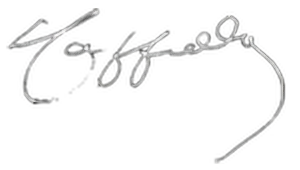Biography
The man
1875
Cappiello born in Livorno, Italy. His father is a maritime liquidator, handling disputes between shipping companies, commission houses and private individuals.
1886 à 1892
First paintings.
1897
Spring: Cappiello arrives in Paris to visit his brother, who works at the stock exchange. Brief return to Livorno for the death of his father.
June: returns to Paris, where he settles permanently.
June: returns to Paris, where he settles permanently.
1896 à 1905
Caricature period.
1900
In November, he signs his first contract with printer-publisher P. Vercasson, marking the start of his career as a poster artist.
1901
Marriage to Suzanne Meyer, sister-in-law of Lucien Mühlfeld (literary critic) and Paul Adam (writer). He had two children.
1899 à 1942
Poster period.
1902 à 1913
He works for the publisher Vercasson.
1914
He receives the Légion d’honneur.
1914 à 1918
Recalled by Italy during the war as an interpreter for the Information Service. He has a little time left to take part in charity days for the war-wounded, publish satirical cartoons against the Germans and make a few posters.
1919
After the armistice of 1918, he joined the publisher Devambez, with whom he worked until 1936.
1921
He is promoted to Officier de la Légion d’Honneur.
1928
Commander of the Legion of Honor.
1930
He takes French nationality.
1941
Ill, he retired to Grasse, to the home of his sister-in-law, Mme Lucien Mühlfeld.
1942
Cappiello died in Cannes following a dinner with his friend André Rouveyre. He is remembered as an indulgent, very likeable man who embodied Italian seduction, with a certain reserve that gave him an obvious nobility.
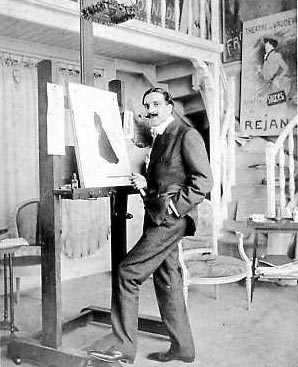
Cappiello in his studio
194 Bd Malesherbes, Paris, 1902
The immigrant
It’s no coincidence that Cappiello came to live in France. At the time, Paris was the world capital of the arts. Sooner or later, he was bound to spend some time there. Here is his account, published in October 1932 in the “Bravo” newspaper.
The work
1886
First paintings: a portrait of a man and another of a woman (unlocated). He continues his schooling in Livorno; his notebooks are filled with sketches. He starts copying old engravings.
1892
Although Cappiello did not attend an art school or private studio, he knew most of the painters working in Livorno and Tuscany at the time. He exhibited a large canvas for the first time in Florence: Femme dans un intérieur (Livourne, Museo Municipale G. Fattori).
1896
First album of caricatures: Lanterna Magica. Illustrates a dance card (lost).
1898
Spring: Cappiello arrives in Paris to visit his brother, who works at the Stock Exchange. Brief return to Livorno for the death of his father. June: return to Paris, where he meets Puccini and the actor Novelli.Le Rire : Puccini Novelli . Start of the Les Contemporaines series in Le Rire. First caricature of Réjane on the cover of Le Rire. First caricatures in Le Cri de Paris (Polin, Polaire…).
1899
First drawings in La Rampe and Le Sourire. Caricature statuettes: Yvette Guilbert, Jeanne Granier, Réjane.
Late May or early June: Nos Actrices, an album of character portraits published by Revue Blanche. First poster for Le Frou-Frou. He meets
Toulouse-Lautrec.
Late May or early June: Nos Actrices, an album of character portraits published by Revue Blanche. First poster for Le Frou-Frou. He meets
Toulouse-Lautrec.
1900
First drawings in Le Journal (Sarah Bernhardt in “L’Aiglon”). Two posters in particular make him a household name: Le Cachou Lajaunie and Les Amandines de Provence.
1901
First drawings in Le Figaro. Two caricatures in L’Assiette au Beurre.
Significant poster activity: Corset le Furet, Odette Dulac, La Marquisette…
Significant poster activity: Corset le Furet, Odette Dulac, La Marquisette…
1902
Posters: Réjane’s comeback in ” La Passerelle “, Louise Balthy at the Folies Bergères.
November 28: Gens du Monde, special issue of L’Assiette au Beurre.
November 28: Gens du Monde, special issue of L’Assiette au Beurre.
1903
April: Le Théâtre de Cappiello, special issue of Le Théâtre magazine. Designs poster for Klaus Chocolatea veritable revolution in advertising art, followed by Katabexine and Le P’tit Jeune Homme.
1904
January: Les Contemporains célèbres, first series, advertising album for the Lefèvre-Utile firm, illustrated with 18 caricatures by Cappiello.
Cappiello abandons caricature almost entirely, devoting himself essentially to posters.
1905
70 drawings by Cappiello, a collection of previously published press cartoons, edited by H. Floury. Portraits ofAlbert Emile Sorel and Madame Lucien Mühlfeld. Posters forAnis Infernal, Portofino-Kulm, Bijoux Colin, Fleur des Neiges.
1906
1907
Decoration of Louis Dreyfus’s villa in Saint-Germain-en-Laye. Numerous portraits. Important posters: Angélus, Triple Sec Fournier, Maurin-Quina. Sets out his theory of the poster in Publicité Moderne.
1908
Exhibits a portrait of Paul Adam, his brother-in-law, at the Salon de la Comédie Humaine. Member of the organizing committee for the2nd Salon des Humoristes, where he exhibits. Posters for Source Parot, Xéres Quina Ruiz.
1909
Exhibits Portrait of his wife and two children at the Société Nationale des Beaux-Arts (Livorno Museum), then at the Salon des Humoristes. Posters for Pippermint, Fernet-Branca, numerous posters published by Vercasson in South America.
1910
Exhibits at the Société Nationale des Beaux-Arts the portrait ofHenri de Régnier (Musée d’Orsay). Famous poster for Cinzano.
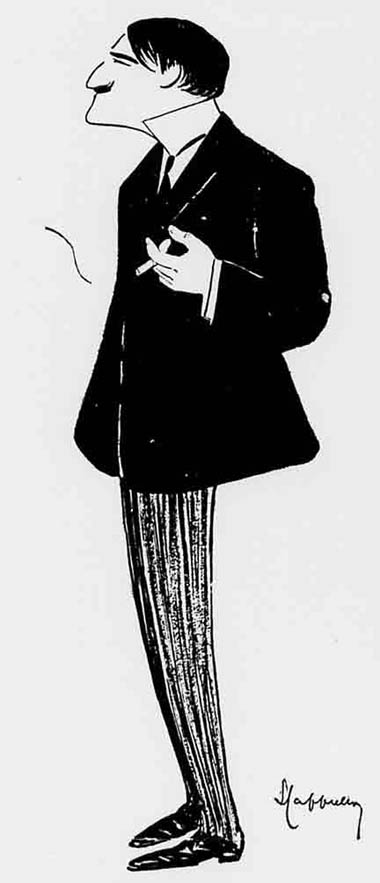
Cappiello by himself in 1904
1911
New contract with Vercasson. He makes a large number of posters: Vittel Grande Source, Longines, Oxo, Florio and above all the famous Chocolat Poulain.
1912
Decorates the tea room, reading room and smoking room at Galeries La Fayette. Numerous posters: Marie Brizard, Le Nil, Bière du Fort-Carré, Sacha Guitry Jean III.
1913
1914
Some posters: Lyon International Exhibition, l’Eclair.
1915
Publishes a few etchings on the war and contributes to La Baïonnette, Le Rire and Fontasio.
1916
Cover of the first edition of Apollinaire’s Poète Assassiné. Some posters: Le Trait-d’Union Franco-Italien, Thermo-Bloc.
1919
Starts working with Devambez. Some posters: L’Avenir, Poudre de Luzy.
1920
He is again a member of the Salon des Humoristes committee. Exhibits at the1st Salon de la Publicité and in Beauvais at the Salon de l’Affiche. Numerous posters: in particular Blanchisseries Franco-Américaines, Mistinguett, Robur, Cachou Lajaunie. Decoration of a grocery store on rue Jean Goujon.
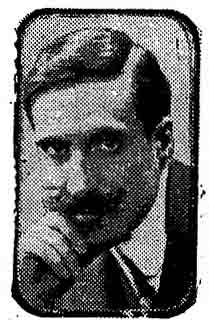
Cappiello around age 39
1921
Won a lawsuit against Chocolat Poulain, which had partially reproduced and modified his poster. Numerous posters for France and Italy, Bitter Campari, Café Martin, Imperméables Pirelli . In November 1921, he signs an exclusive contract with Devambez, the sole dealer for Nouvelles Affiches Cappiello.
1922
Exhibits poster models at the Venice Biennale and at the French Institute in New York. Numerous posters in France and Italy: Exposition Coloniale de Marseille, Parapluie-Revel, Restaurant Poccardi.
1923
February-March: private exhibition of all his work at Devambez. Posters for the opening of the Théâtre de l’Etoile, Pâtes Ferrand-Renaud, Royat.
1924
1925
1926
Posters for Louis Doize cigarettes , l’Eau des Abatilles, La Baule.
1927
Posters forLaurens cigarettes , Lane Borgosesia.
1928
Designs ballet sets and costumes, first for Sacha Guitry, then for Leonide Massine. Self-portrait commissioned by the Uffizi Gallery in Florence. Posters for L’Ami du Peuple, Becuwe.
1929
Important posters for Savora
1930
1931
Exhibits his Perroquets tapestries, made by the Manufacture Nationale de Beauvais, at the Exposition Coloniale. Important poster for the Bouillon Kub.
1932
Exhibits at the Salon des Humoristes, for which he designs the poster. Poster for Dubonnet, Marianne.
1933
Posters for Beurre Gautier, La France de Bordeaux et du Sud-Ouest.
1934
1935
Fresco decoration of the bar at Dupont restaurant, boulevard Barbès. Exhibits at the Salon des Humoristes, participates in the Salon de l’Enseigne.
1936
Participates in the Milan Triennale and the Exposition de l’Affiche Française in Prague.
1937
La Force Motricedecoration for the Advertising Pavilion at the 1937 Exposition. Cappiello was Vice-President of the advertising class. Posters for the Exposition Paris 1937 and theWelcoming of France.
1938
Exhibits a large canvas, Les Dormeuses, at the Salon de la Société Nationale des Beaux-Arts (Musée des Beaux-Arts de Lyon). Some posters: Mossant, Semaine de l’enfance
1939
Takes part in the “Affiche en couleurs de Chéret à nos jours” exhibition at the Conservatoire des Arts et Métiers.
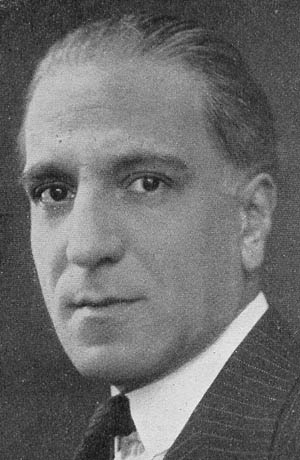
Cappiello around the age of 47
1941
Series of illustrations of Rimbaud’s poems (unpublished).
1942
On his death, Cappiello left us a considerable body of work, the subject of numerous exhibitions and retrospectives.
1947
Retrospective at the Musée des Arts Décoratifs in Paris.
1960
Retrospective at the Casa della Cultura in Livorno.
1961
Exhibition at the Palais Saint Pierre in Lyon.
1962
Exhibition at the Musée d’Art et d’Histoire de Genève.
1981
Retrospective at the Grand Palais in Paris.
1993
Exhibition at the Mona Bismark Foundation in Paris.
1994
Exhibition in Saint-Rémy-de-Provence (France).
2003
Exhibition at the Musée des Beaux Arts de Lyon.
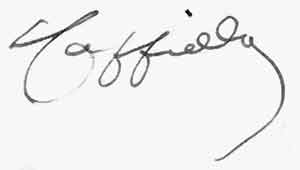
Leonetto Cappiello's signature in May 1922
Biography taken and completed from: ‘Les Dossiers d’Orsay – Cappiello 1875 – 1942’, p186 and 187 © Réunion des Musées Nationaux, Paris 1981, ‘Dossiers d’Orsay’
Bibliography
Apart from exhibition catalogs, the main books on Cappiello are the following:
1946
Jacques Viénot: “L. Cappiello sa vie et son oeuvre” (Preface by Jean Cocteau) – Editions de Clermont.
1978
“Cappiello et la Belle Epoque” (Preface by Jacques de Lacretelle) – Editions Sciaky.
2004
Jack Rennert: ” Cappiello – The posters of Leonetto Cappiello ” – Editions The Poster Art Library.
2011
Marie-Laure Soulié-Cappiello: “Cappiello – Catalogue raisonné des caricatures” – Editions Sillage.
2016
Francesca Cagianelli: ” Leonetto Cappiello (1875 – 1942) Oltre L’Affiche ” – Editions Libreria Universitaria.
